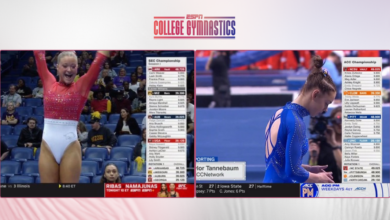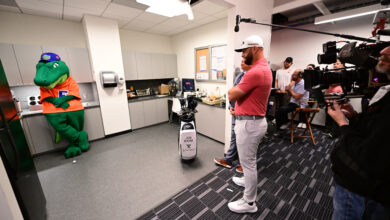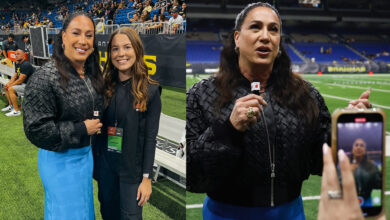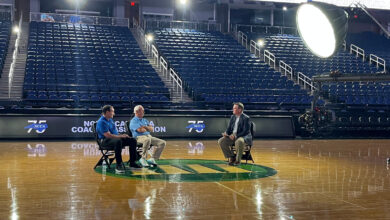Happy 10th birthday, K Zone
Ten years ago Friday, ESPN took major steps to enhance the Major League Baseball viewing experience by debuting the “K Zone” on Sunday Night Baseball.
The 2002 Sports Emmy award-winning “K Zone” is a computer-generated, on-screen graphic.
It’s calibrated specifically for each batter, calculating the speed and showing the location in which the ball crosses the hitter’s strike zone.
In 2006, ESPN unveiled “K Zone 2.0,” which added the ability to track the path of a ball from the pitcher’s hand to home plate and the ability to show a complete sequence of pitches to a batter shown in numerical order.
In 2011, ESPN began utilizing this technology during live game telecasts with “K Zone Live.”
ESPN Senior Vice President & Executive Producer Jed Drake is always looking for innovative ways to enhance the viewer experience.
Drake was able to take a few minutes from his responsibilities in Germany — where he’s producing the 2011 FIFA Women’s World Cup — to talk about “K Zone,” why he’s proud of it, and why it’s an important tool for ESPN’s baseball coverage.
FR: Thinking back 10 years, why did you think “K Zone” would be good for ESPN’s baseball coverage?
JD: I’ve always had a desire to use technology to see things you can’t normally see. The 1st and 10 line in National Football League telecasts is a perfect example. As a baseball fan, we wanted to do for baseball something that has never been done before. It was not an easy thing to do.
FR: What were the early challenges using “K Zone?”
JD: Unlike the 1st and 10 line in football — which stays fixed in one position — the strike zone is constantly varying in vertical height. We were developing this system from scratch and it was very complex at times. One of the key elements we wanted to incorporate is being able to graphically show not only just where the strike zone is located, but be able to answer whether the pitched ball actually crossed the strike zone at any moment.
FR: What makes ESPN’s presentation of ”K Zone” unique?
JD: The most important aspect is that it’s inserted over live video. We’re doing this throughout the game on Monday Night Baseball now. It sits in frame and it’s the actual strike zone. Another unique characteristic is the ability to show you the trail of the ball that comes from the pitcher’s hand. We also have the ability to mark each pitch in its specific location.
FR: What are the best uses of “K Zone” that you recall?
JD: There is no one use that is the best. Anytime you utilize new technology, you have to make sure you’re doing it for the viewer. What I get most excited about is seeing our analysts use it. I love that it aids our former pitchers when analyzing an at-bat. In any game, there will be times when “K Zone” can be used to see things the viewer may have missed or to help our commentators better explain something to our audience.
FR: What’s been the feedback from our talent?
JD: Like any new technology, we had to prove it was accurate. Once our talent came to that conclusion — on their own — they accepted it. The acceptance has grown over time. It has grown from an element that offers cautious perspective to an element for which there’s an outright need.
FR: Where do you see “K Zone” going in the future?
JD: I am asked this question all the time and it truly depends on a number of factors. I think where we take it in the future depends on discussions with our analysts and gauging their perspective. We invite our analysts into the decision-making process. As things occur in baseball and as our commentators see opportunities to use “K Zone” in different ways, we’ll make the best decision for the viewer.








